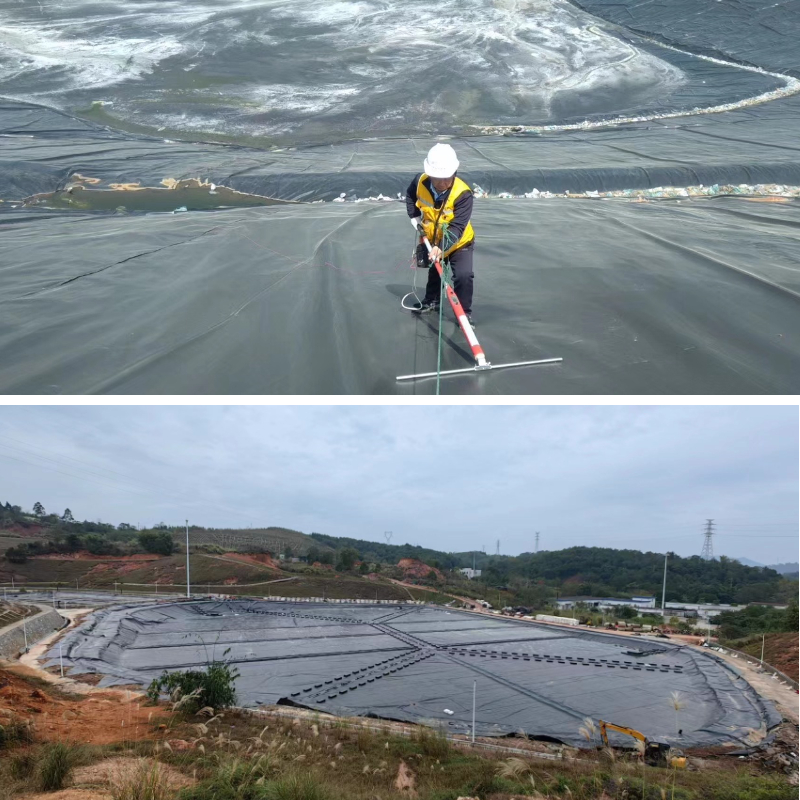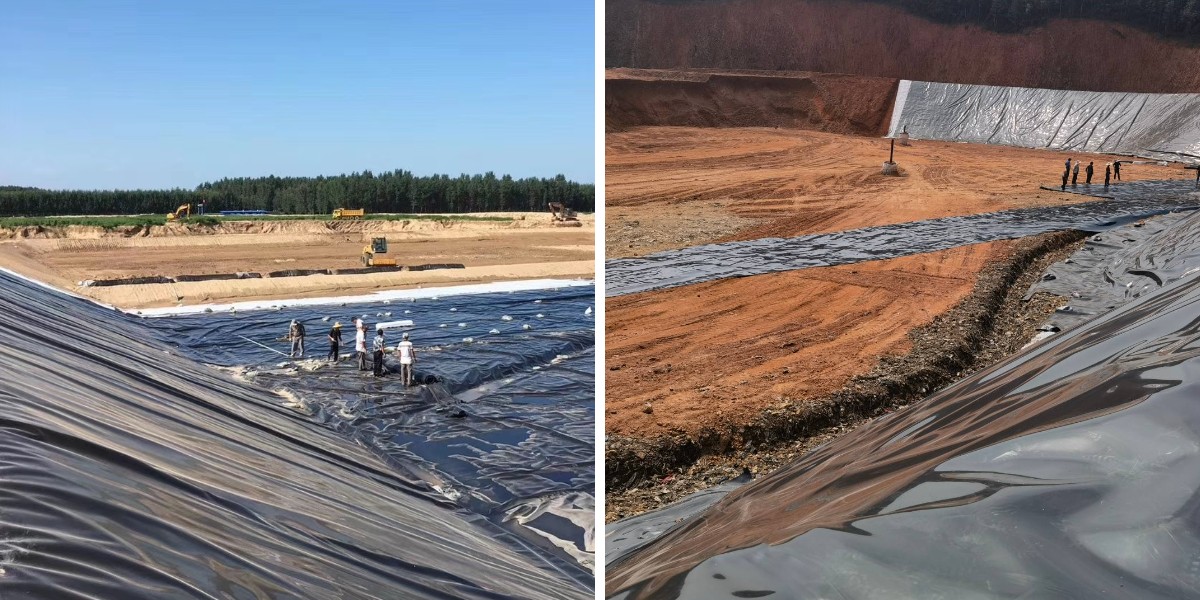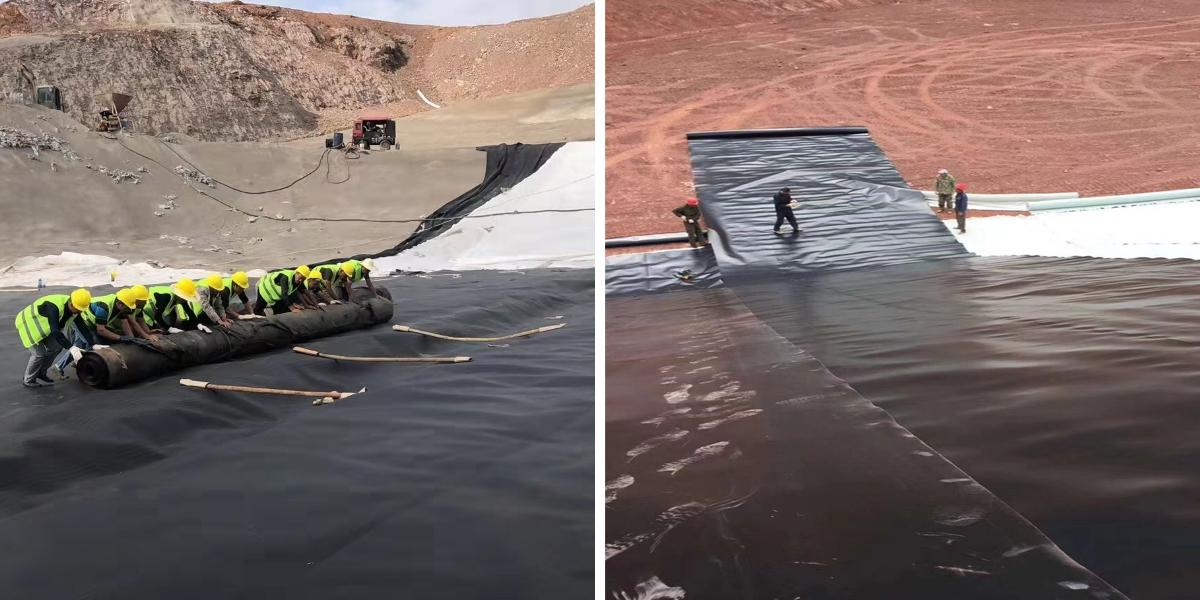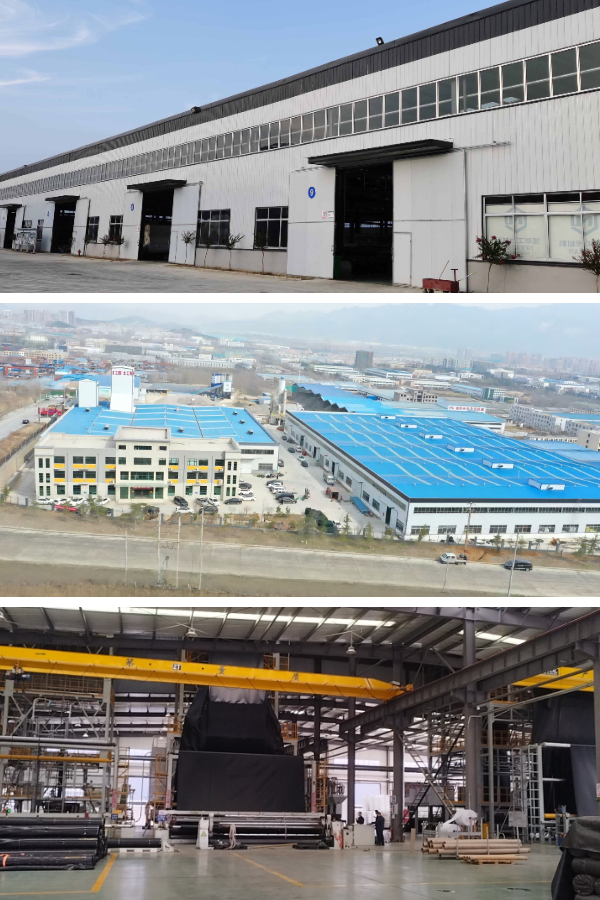How to Choose the Right Thickness of HDPE Geomembrane for Your Construction Project
In development tasks like waste landfills, water reservoirs, and agricultural irrigation systems, hdpe geomembrane acts as a vital barrier towards leakage, corrosion, and environmental contamination. However, selecting an mistaken thickness for the geomembrane can lead to luxurious repairs, undertaking delays, or even long-term environmental risks. This information breaks down four core elements to assist you choose the most advantageous thickness of hdpe geomembrane for your particular challenge needs.
1. Start with Your Project’s Application Scenario
The predominant use of your hdpe geomembrane immediately determines the minimal thickness required. Different eventualities expose the geomembrane to various ranges of stress, puncture risk, and chemical exposure—all of which demand tailor-made thicknesses.
1.1 Waste Landfills & Contaminated Site Remediation
Landfills and brownfield initiatives contain steady contact with poisonous beverages (leachate) and sharp particles (broken glass, steel scraps), so a skinny geomembrane right here is susceptible to punctures or chemical degradation; for municipal strong waste landfills, decide for hdpe geomembrane with a thickness of 1.5mm to 2.0mm as this balances puncture resistance and flexibility to stop leachate seepage into groundwater, whilst for hazardous waste sites, go thicker with 2.0mm to 3.0mm hdpe geomembrane on the grounds that the more layer enhances resistance to aggressive chemical compounds (e.g., heavy metals, solvents) and reduces long-term fabric breakdown risk.
1.2 Water Conservation (Reservoirs, Canals, Ponds)
In water-related projects, the geomembrane’s major job is to hold water and stand up to hydrostatic pressure, so thickness is key to warding off stretching or tearing below water weight; for small agricultural ponds or ornamental water features, 0.5mm to 1.0mm hdpe geomembrane suffices as these tasks have low water strain and minimal exterior stress, whilst for massive reservoirs or irrigation canals, use 1.0mm to 1.5mm hdpe geomembrane due to the fact the thicker fabric handles greater hydrostatic stress (especially in deep reservoirs) and resists injury from water float or minor soil movement.
1.3 Civil Engineering (Roads, Tunnels, Landfills)
Road subgrades and tunnel linings use hdpe geomembrane to forestall moisture from weakening the structure, so thickness should account for development site visitors and soil compaction; for street base waterproofing, 0.8mm to 1.2mm hdpe geomembrane works properly as it withstands the weight of building automobiles (e.g., bulldozers, rollers) barring tearing, whilst for tunnel linings, 1.2mm to 1.8mm hdpe geomembrane is perfect as it adapts to moderate tunnel wall actions and blocks groundwater infiltration that should reason concrete erosion.
2. Evaluate Environmental Conditions at the Project Site
Even the nice hdpe geomembrane will fail if its thickness doesn’t suit the site’s environment. Extreme temperatures, soil type, and UV publicity all have an effect on how the geomembrane performs over time.
2.1 Soil Type & Puncture Risk
The composition of the soil the place you’ll deploy the geomembrane at once influences thickness needs, as rocky, gravelly, or debris-filled soil will increase puncture chance and requires a thicker barrier; for rocky or gravelly soil, pick 1.2mm to 2.0mm hdpe geomembrane due to the fact the delivered thickness acts as a buffer in opposition to sharp rocks or gravel that ought to pierce thinner membranes all through set up or soil settlement, whilst for sandy or clay soil, 0.5mm to 1.0mm hdpe geomembrane is regularly sufficient on account that these soils are smoother and much less in all likelihood to purpose punctures, balancing overall performance and cost.
2.2 Temperature Fluctuations
HDPE geomembrane turns into brittle in intense bloodless and smooth in excessive heat, and thicker membranes are greater resistant to thermal stress as they soak up temperature modifications except cracking or stretching; for bloodless climates (e.g., northern areas with sub-zero winters), use 1.0mm to 1.8mm hdpe geomembrane due to the fact thicker cloth resists freeze-thaw cycles that can cut up thinner membranes as water expands inner tiny cracks, whilst for warm climates (e.g., barren region areas with excessive UV), 0.8mm to 1.5mm hdpe geomembrane is recommended—though UV stabilizers are brought to all HDPE products, thicker membranes have a longer carrier lifestyles in excessive daylight as UV rays take longer to totally degrade the material.
2.3 Chemical Exposure
If your venture includes contact with chemical substances (e.g., fertilizers in agriculture, industrial wastewater), the geomembrane’s thickness ought to guard in opposition to chemical permeation; for moderate chemical substances (e.g., agricultural fertilizers, low-pH water), 0.8mm to 1.2mm hdpe geomembrane is adequate because HDPE’s inherent chemical resistance handles these components except greater thickness, whilst for aggressive chemical substances (e.g., industrial acids, oil-based liquids), 1.5mm to 3.0mm hdpe geomembrane is fundamental as the thicker layer slows chemical permeation, lowering membrane failure and environmental infection risks.
3. Consider Mechanical Performance Requirements
Your hdpe geomembrane should stand up to mechanical stresses like pulling, stretching, or affect in the course of set up and long-term use. Thickness without delay influences key mechanical properties, such as tensile power and puncture resistance.
3.1 Tensile Strength Needs
Tensile energy refers to the geomembrane’s capacity to withstand stretching or tearing when pulled, and tasks with soil motion (e.g., slopes, landfill caps) require greater tensile energy that comes with increased thickness; for flat web sites with secure soil, 0.5mm to 1.0mm hdpe geomembrane has ample tensile energy for minimal movement, whilst for sloped websites (e.g., landfill sides, canal banks), 1.0mm to 1.8mm hdpe geomembrane is higher as thicker membranes cope with the downward pull of soil or water on slopes, stopping stretching and leaks.
3.2 Puncture Resistance
As referred to earlier, puncture resistance is indispensable for web sites with sharp objects, however it additionally things all through installation—workers, equipment, or even tree roots can harm a skinny geomembrane; for low puncture danger (e.g., easy soil, no heavy equipment), 0.5mm to 0.8mm hdpe geomembrane works, whilst for excessive puncture chance (e.g., development zones with heavy machinery, rocky soil), 1.2mm to 2.5mm hdpe geomembrane is indispensable as thicker membranes require extra pressure to puncture, decreasing unintentional harm all through installation.
3.3 Tear Resistance
Tears can begin small (e.g., from a sharp edge) and unfold if the geomembrane lacks tear resistance, and thicker membranes sluggish tear propagation as the greater fabric absorbs power earlier than the tear grows; for initiatives with minimal foot site visitors or equipment, 0.5mm to 1.0mm hdpe geomembrane is adequate, whilst for high-traffic web sites (e.g., development zones, public ponds), 1.0mm to 1.5mm hdpe geomembrane is endorsed as the thicker layer prevents small tears from turning into large, leak-causing gaps.
4. Follow Industry Standards & Local Regulations
Ignoring industry requirements or nearby legal guidelines when deciding on hdpe geomembrane thickness can lead to venture rejection, fines, or felony liability. Most areas have strict tips for exceptional challenge types, and these requirements frequently specify minimal thicknesses for geomembrane products.
4.1 International & National Standards
Major requirements corporations set baseline necessities for hdpe geomembrane thickness to make sure protection and performance, such as ASTM D751 (U.S.) which requires a minimal thickness of 1.0mm for landfill liners and 0.5mm for non-critical functions (e.g., ornamental ponds), ISO 1461 which specifies thickness degrees primarily based on use—1.0mm to 2.0mm for waste containment and 0.5mm to 1.0mm for water conservation—and GB/T 17643 (China) which mandates 1.5mm minimal thickness for hazardous waste landfills and 1.0mm for municipal strong waste landfills; usually take a look at that your hdpe geomembrane meets these standards, as non-compliant merchandise may additionally fail inspections or operate poorly.
4.2 Local Environmental & Construction Codes
Local governments regularly add stricter policies primarily based on regional dangers (e.g., excessive groundwater levels, touchy ecosystems); for example, coastal areas may additionally require 1.2mm to 1.8mm hdpe geomembrane to face up to saltwater corrosion, even for small ponds, whilst ecologically touchy zones (e.g., close to rivers or wetlands) may additionally mandate 1.5mm+ hdpe geomembrane to forestall any leakage that should damage neighborhood wildlife—consult your nearby constructing branch or environmental enterprise early in the mission to verify thickness requirements, as this avoids remodel later.
Final Tips for Choosing HDPE Geomembrane Thickness
Selecting the proper thickness isn’t simply about choosing a number—it’s about balancing performance, cost, and compliance. Here’s how to wrap it up:
Prioritize safety: Never pick a thickness beneath the minimal required through requirements or regulations.
Avoid overspending: A thicker geomembrane fees more—only go thicker if your project’s wishes (e.g., chemical exposure, slope) demand it.
Consult experts: Work with hdpe geomembrane producers or engineers to check your site’s prerequisites and verify the gold standard thickness.
Whether you’re constructing a landfill, a reservoir, or a road, the proper hdpe geomembrane thickness ensures your undertaking lasts many years besides leaks or failures. By focusing on application, environment, mechanical needs, and standards, you’ll make a desire that protects your funding and the environment.
Would you like me to create a project-specific HDPE geomembrane thickness advice sheet? It will pull key important points from every part to in shape your mission kind (e.g., landfill, reservoir) and web site conditions, making it convenient to reference throughout fabric selection.
Contact Us
Company Name: Shandong Chuangwei New Materials Co., LTD
Contact Person :Jaden Sylvan
Contact Number :+86 19305485668
WhatsApp:+86 19305485668
Enterprise Email: cggeosynthetics@gmail.com
Enterprise Address: Entrepreneurship Park, Dayue District, Tai 'an City,
Shandong Province









